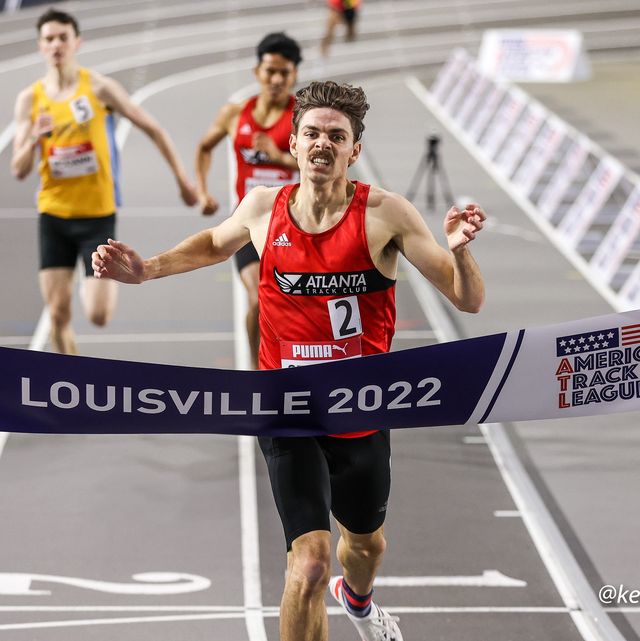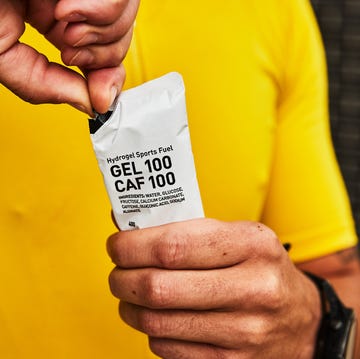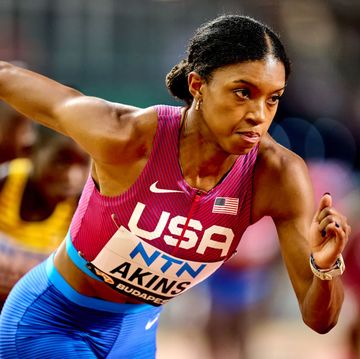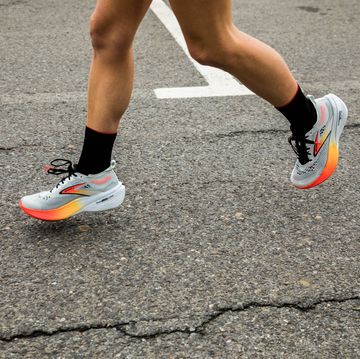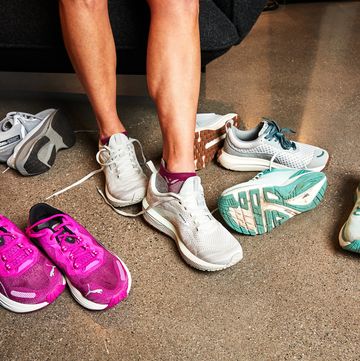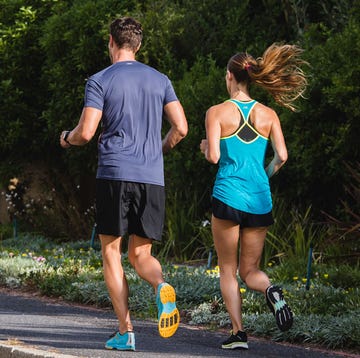Almost two years ago, Shane Streich didn’t know what his running future looked like. Now he’s an American record-holder.
In March 2020, Streich, then a fifth-year senior, was set to compete on the distance medley relay for the University of Minnesota at the NCAA Indoor Track and Field Championships in Albuquerque, New Mexico. One day before the meet, the runner from Janesville, Minnesota, and dozens of fellow competitors were left heartbroken when the NCAA canceled the championship because of coronavirus concerns.
“It’s one of those things where you feel like the rug is pulled out from under you,” Streich told Runner’s World.
During the early COVID-19 lockdowns, the middle-distance runner considered his options: graduate and join a post-collegiate running group in Minneapolis, Minnesota, or finish his NCAA eligibility at another school. Fueled by the disappointment of losing the opportunity to compete, Streich chose the latter; in the fall of 2020, he transferred to Lipscomb University in Nashville, Tennessee.
“I didn’t get to end things on my own terms, and I think that’s what made me hungry the next year,” Streich said.
Realizing that he didn’t want to take any racing opportunity for granted, Streich has made huge strides on the track in the last year. At the 2021 NCAA Outdoor Track and Field Championships, he finished sixth in the 800-meter final, earning his first individual All-American honor. He followed that by advancing to the semifinal of the 800 meters at the U.S. Olympic Track and Field Trials. In the same week, he ran a personal best of 1:45.85 at the McKenzie International meet. Then, later that summer, he turned pro and joined the Atlanta Track Club.
After two indoor personal bests and significant wins—including a 3:57 victory in the mile at the Millrose Games and an 800-meter win (1:46) at the Dr. Sander Invitational—Streich launched himself to another level by breaking the 1,000-meter American record on February 12. The 25-year-old ran 2:16.16 at the American Track League meet in Louisville, Kentucky, smashing the previous record of 2:16.27 set by world championship finalist Bryce Hoppel in February 2021.
“Obviously it was tough, but a lot of it just came down to believing in myself and carrying that mentality every step of the way, even when it got to be a struggle that last 200-300 [meters] of the race,” Streich said.
A few days after the victory, Streich shared insight on his progression towards the record, honing his mental game, making the transition to pro running, and his goals for the rest of the season.
(This interview has been edited for length and clarity.)
Runner’s World: The 1,000 meters in Louisville was your debut in the distance. What was it like breaking the American record in your first attempt?
Shane Streich: It was interesting in terms of trying to prepare for how it was going to feel. I had good conversations with my coaches and also with Abe Alvarado, my teammate, who has run plenty of 1Ks before. I got to pick his brain and rely on that trust and friendship that we have as teammates to walk me through it, just myself being new on the team, but also someone new to the event.
I approached [the 1K with the mindset] that I had the strength as shown by the mile, even though at this time that 3:57 isn’t a true representation of the shape I’m in. Knowing that and obviously knowing the speed is there from having a successful 800 [meters] really gave me confidence in going for the American record.
Not a lot of people even knew that we were [aiming for the record] and were very surprised by that, but I know both my coaches, Amy and Andrew Begley, were fully aware that’s what we were going for. Obviously I had a great race and at the end of the day, it was great to have Abe at my side to push me. It’s a way to show everybody what’s going on here in Atlanta with the Atlanta Track Club, and that we are a team that’s on the rise.
It’s crazy to think about that in my first time running an event, I was trying to run a time that no American has ever ran before. A lot of that came down to my mindset of wanting to go out there and push my limits, see what I could do, give myself a chance. Obviously that resulted in the 1K American record.
This is your first season as a pro competing for the Atlanta Track Club. How has the transition been with the team?
[This is] my third team and third coaching situation in three years, after being at Minnesota for five years, transferring to Lipscomb for my final year of NCAA eligibility, and then having this opportunity at Atlanta Track Club. It took some time to get used to. The intensity was definitely increased compared to even the collegiate level, which makes sense because you have bigger goals when trying to run faster. The fall was a long training period, and I had some opportunities to run some road races through the track club organization and get accustomed to the team and coaches. It was a great fall and training went well.
I’m somebody who, especially for middle distance, probably runs a little bit more mileage than most, but that’s also because I come from a strength background. So, the intensity was the biggest change in terms of actual training that I had to get accustomed to.
Early on, when running a few workouts, I was like, wow, this is hard. I had a few workouts last year when I was at Lipscomb that kind of put me on my butt afterwards. It started off with that same feeling [in Atlanta], but [I kept a] positive mindset, [thinking] I’ll get used to it. And also having the positive reinforcement from my coaches and them knowing that it will take time to make that adjustment—that really helps. Then obviously just getting used to new teammates and figuring out what are the strengths and weaknesses of each teammate and how they operate ... thankfully, they really focus on putting the team first.
One of the hardest workouts we’ve done is called the Vigil (named after famed distance coach Joe Vigil). Everything is at mile pace and you start off by running 50 meters at pace and then you jog 50 meters. Then, you go 100 meters and jog 100 meters. You keep adding 50 meters each time and jog equal rest in between, and you basically go until failure. ... It’s very intense. You have the physical component, but also the mental component, and it really challenges you to overcome some of those mental barriers. It also showed the great team camaraderie that we have. Abe Alvarado and Ryan Adams helped pull me along.
The first one I did was early November. I made it 550 meters on pace (58 seconds per quarter mile) and then for the 600 meters, I made it on pace through 400 meters and then I hit the wall and the last 200 was not pretty.
When I see [this kind of] challenge in front of me, instead of backing down and being fearful of it, it’s like, well, these are the cards I’m dealt. Let’s go out there, take advantage of the situation, make the most out of it, get a good effort, and push those limits. So, the pace was definitely scary, but at the same time, I think that we’ve seen the results show up in my races this year in terms of the mental component.
Is that mental component something that you’ve especially honed this year, or has that always been a strength for you?
The last two years, it’s been something I’ve really honed in on. As an athlete, it’s easy to forget about [the mental component] and let your physical abilities carry you. I’ve had a lot of ups and downs regarding running mentality. At the end of the day, I know that I may not be able to always feel great for a race physically, but I can control my mental game. That’s going to help me overcome any physical barriers that I have.
For me, I’ve really found my running identity as somebody who loves to compete, somebody who’s a fighter and who is willing to take chances on themselves. At the same time, I want to find my limits and push those limits. I can only do that if I’m on the mental side of the sport.
At Millrose in the invite mile, I remember going out there and not feeling physically sharp throughout the race. My legs felt dead but at the same time, I was giving myself positive reinforcement, telling myself, “Your legs are feeling good. They’ve felt this way before and you’ve made it through, keep pushing.” Obviously, that allowed me to hang around long enough such that I was able to have a PR in the mile and most importantly compete and take home a win.
The mentality side of things has become a huge part of my running and will continue to be as long as I’m in the sport. A lot of it is through self-reflection and committing to it. It also helps having conversations with friends who are advocates for the mental side of the sport. Having those conversations and support makes it easier to hone it. It’s the same as physical training—you have to practice and work on it, and the more you focus on it, the more it’ll become natural. Race visualization also helps knowing where things are going to hurt. There's always going to be pain during races and training but it’s your decision whether to let it in the driver’s seat or not. Are you going to let it take control of your race or are you going to embrace it and push through?
What did you tell yourself in the last 200 meters of the 1K?
The advice my coaches gave me prior to the race was that you’ll probably feel decent through 800 [meters], but the last 200 will really hurt. At 400, I realized, this is already uncomfortable, and I don’t think I’m going to feel great at 800, but it was just chugging away each of those laps. I got to that final 200, and it was already painful, but the pain just continues to mount. It was really about having the confidence of knowing I was in the exact position that I wanted to be. I was the one in control of my own race. I [was thinking], “Nobody goes around me. I have to find a way to pull it together, push through that final level of pain, and make it to the finish.”
What are your goals for the upcoming USATF Indoor Championships?
For me personally, I’d like to make my first world team. And as in most situations I approach, I know I have the capability to do so. But sometimes it’s just a matter of whether everything lines up in the right way to capitalize.
So, I just want to go in there, compete, and do my best to put myself in the best position to earn that spot on the world team in the 800 and just have fun with it too. You can still have fun while going through the pain of the sport and challenging yourself and just taking advantage of the opportunity and embracing it for what it is.
Taylor Dutch is a writer and editor living in Austin, Texas, and a former NCAA track athlete who specializes in fitness, wellness, and endurance sports coverage. Her work has appeared in Runner’s World, SELF, Bicycling, Outside, and Podium Runner.
